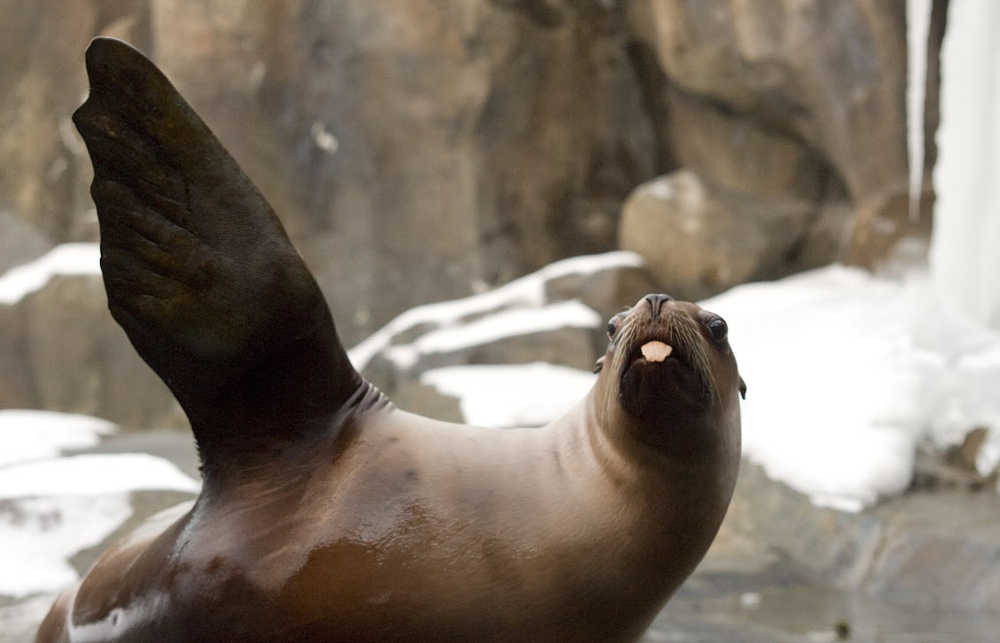The Alaska SeaLife Center is grieving over the loss of one its family members.
On Wednesday, Sugar, a 21-year-old Steller sea lion, was euthanized after having battled bone degeneration, an ailment that was discovered late last year.
“It has been a rough week,” said Dr. Tara Riemer, president and CEO of the Alaska SeaLife Center.
Brett Long, the center’s husbandry director, said that cancer is believed to have been responsible for the bone degeneration.
Steller sea lions have a lifespan of between 20-30 years, according to the National Oceanic and Atmospheric Administration.
Sugar came to the SeaLife Center in 1998 from Vancouver when she was 5 years old, according to a SeaLife Center press release. She was accompanied to Alaska by Woody, who is now the center’s oldest male sea lion, according to the release.
During her time at the SeaLife Center, Sugar was a pleasure to work with, Long said.
“She definitely had a robust personality,” he said.
At the SeaLife Center, researchers study sea lions for a variety of reasons, including learning about their habitats and reproduction, according to the release.
Sugar produced no offspring, but more than a half dozen Steller sea lions remain at the SeaLife Center, Long said.
Sugar’s death comes after a mysterious trend that has led to some sea lion populations being listed as endangered, while others are not.
Riemer said that the animal is separated into a western stock, which is endangered, and an eastern stock, which is more plentiful and thus delisted.
Seward is located in the western region. The line of demarcation is at 144 degrees west longitude, according to the National Oceanic and Atmospheric Administration.
Between 1976 and 1990, the Steller sea lion population in the west declined by approximately 75 percent, according to the NOAA. The same trend hasn’t affected the eastern sea lions, whose numbers have increased in recent years.
“The eastern stock has grown in number of animals,” Riemer said.
Why the species is more plentiful in one area compared to another is still a mystery.
“That’s the big question that everyone wants to know,” Riemer said.
She said it is believed that predation could be a significant factor. Riemer said common sea lion predators include orca whales and sleeper sharks. Other possible explanations for the diminishing number of sea lions are nutritional factors and disease.
Reach Ian Foley at ian.foley@peninsulaclarion.com.

